VW Touran VS Hyundai IONIQ 5 – Specs, Efficiency & Price Comparison
Which model is the better choice – the VW Touran or the Hyundai IONIQ 5? We compare performance (150 HP vs 609 HP), boot capacity (834 L vs 520 L), efficiency (5.30 L vs 15.60 kWh), and of course, the price (34700 £ vs 37600 £).
Find out now which car fits your needs better!
The VW Touran (MPV) is powered by a Petrol or Diesel engine and comes with a Manuel or Automatic transmission. In comparison, the Hyundai IONIQ 5 (SUV) features a Electric engine and a Automatic gearbox.
When it comes to boot capacity, the VW Touran offers 834 L, while the Hyundai IONIQ 5 provides 520 L – depending on what matters most to you. If you’re looking for more power, you’ll need to decide whether the 150 HP of the VW Touran or the 609 HP of the Hyundai IONIQ 5 suits your needs better.
There are also differences in efficiency: 5.30 L vs 15.60 kWh. In terms of price, the VW Touran starts at 34700 £, while the Hyundai IONIQ 5 is available from 37600 £.
Compare all the key specs now and find out which model fits your lifestyle best!
In this head-to-head comparison, the Hyundai IONIQ 5 stands out with its futuristic design and impressive electric range, making it a top contender for eco-conscious drivers. Meanwhile, the VW Touran offers versatility and practicality, appealing to families with its spacious interior and advanced safety features. Ultimately, the choice between these two vehicles will depend on whether drivers prioritize cutting-edge electric performance or family-friendly functionality.
VW Touran
The VW Touran stands out as a versatile and reliable choice for family transportation. Its spacious interior and cleverly designed seating arrangements offer exceptional comfort and practicality for both short trips and long journeys. With a focus on safety and an array of advanced features, the Touran delivers a driving experience that combines convenience with peace of mind.
details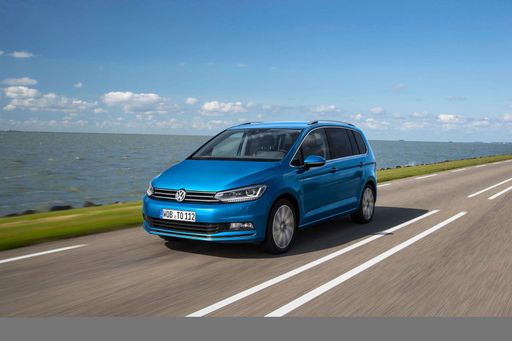 @ volkswagen-newsroom.com
@ volkswagen-newsroom.com
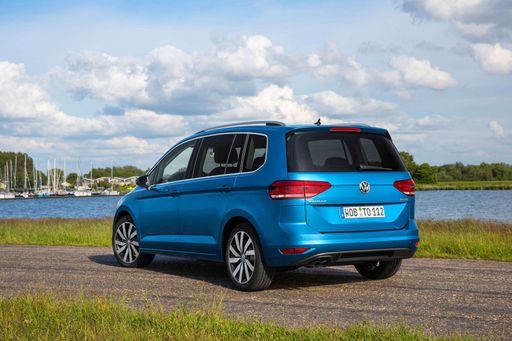 @ volkswagen-newsroom.com
@ volkswagen-newsroom.com
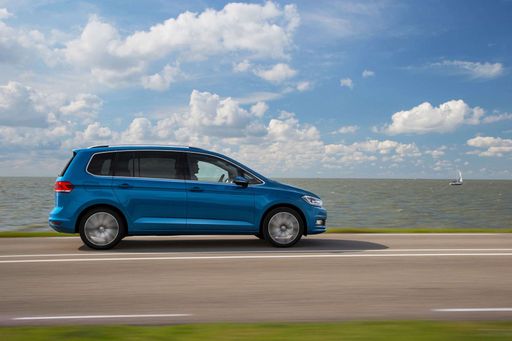 @ volkswagen-newsroom.com
@ volkswagen-newsroom.com
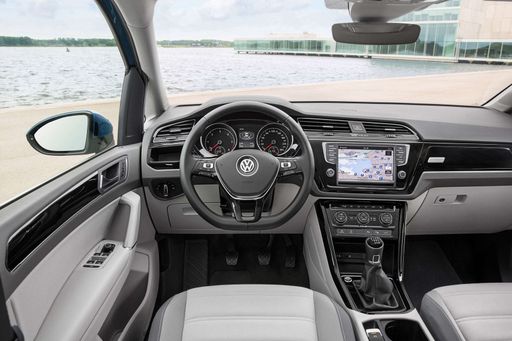 @ volkswagen-newsroom.com
@ volkswagen-newsroom.com
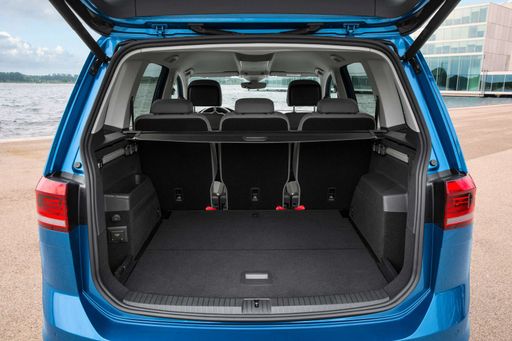 @ volkswagen-newsroom.com
@ volkswagen-newsroom.com
Hyundai IONIQ 5
The Hyundai IONIQ 5 showcases a bold and futuristic design that captures attention with its striking facade and sharp lines. This electric vehicle offers an impressive blend of performance and efficiency, making it a compelling choice for environmentally conscious drivers. Inside, the spacious and tech-forward interior provides a comfortable and engaging driving experience for both driver and passengers.
details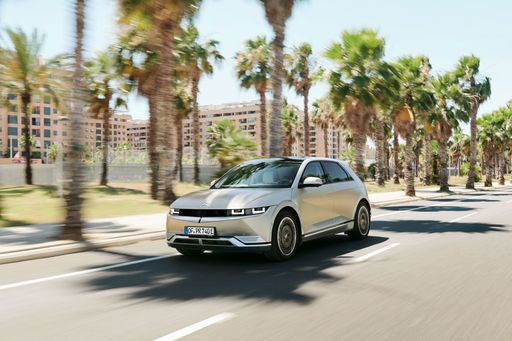 @ hyundai.news
@ hyundai.news
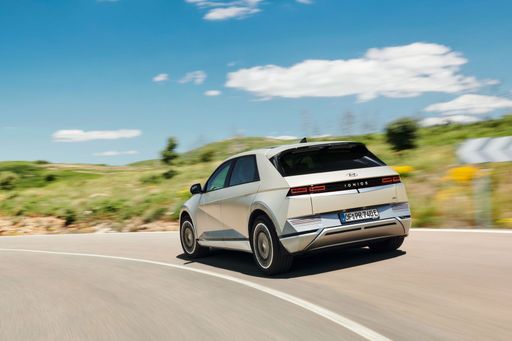 @ hyundai.news
@ hyundai.news
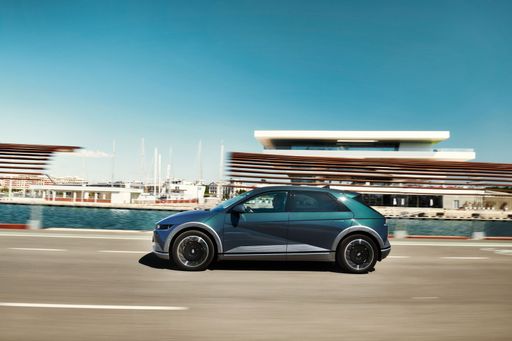 @ hyundai.news
@ hyundai.news
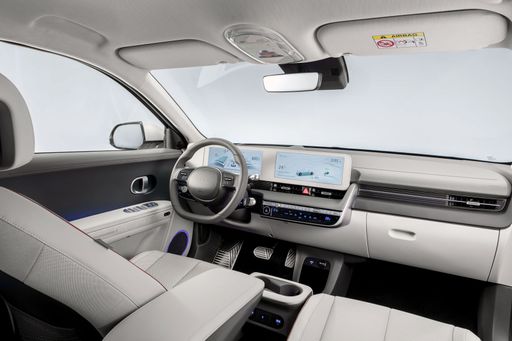 @ hyundai.news
@ hyundai.news
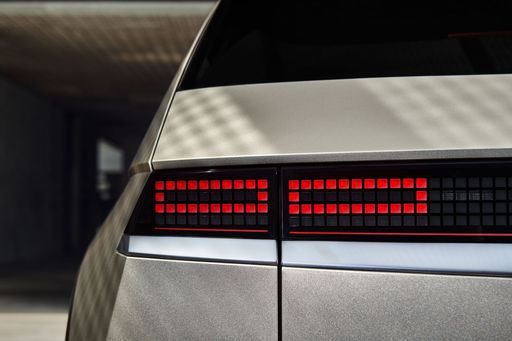 @ hyundai.news
@ hyundai.news
In the ever-evolving world of automobiles, comparing models from different segments can provide valuable insights for potential buyers. In this article, we pit the Hyundai IONIQ 5 against the VW Touran, examining their specifications, innovations, and overall appeal to determine which one might suit your needs best.
A Look at Their Foundations
The Hyundai IONIQ 5 is a compact SUV that represents Hyundai's bold step into the world of electric vehicles. Launched with a futuristic design and cutting-edge technology, it caters to a growing audience of environmentally conscious drivers. Meanwhile, the VW Touran is a multi-purpose vehicle (MPV) that has earned a solid reputation for practicality and versatility. With a focus on family-friendly features, the Touran combines functionality with comfort.
Powertrain and Performance
When it comes to powertrains, the Hyundai IONIQ 5 offers a diverse range of electric options. The vehicle is equipped with rear-wheel or all-wheel drive configurations, with power outputs ranging from 170 HP to an impressive 609 HP. The IONIQ 5 can accelerate from 0-100 km/h in as little as 3.5 seconds, demonstrating its impressive performance capabilities. The electric consumption is also commendable, averaging between 15.6 to 21.2 kWh per 100 km, allowing a maximum electric range of 570 km on a single charge.
On the other hand, the VW Touran comes with multiple engine options, including petrol and diesel variants, with power outputs ranging from 122 HP to 150 HP. While it may not match the IONIQ 5 in terms of raw power or acceleration—achieving 0-100 km/h in approximately 8.9 to 10.8 seconds—the Touran is designed with efficiency in mind, boasting fuel consumption figures between 5.1 to 6.4 L per 100 km.
Design and Dimensions
In terms of dimensions, the IONIQ 5 measures 4655 mm in length, 1890 mm in width, and stands 1605 mm tall. Its spacious interior offers a trunk capacity of 520 L, making it suitable for everyday use and longer journeys. The Touran, with its overall length of 4527 mm, width of 1829 mm, and height of 1668 mm, is slightly larger in height, giving it an edge in interior headroom. It boasts a substantial trunk capacity of 834 L, making it ideal for families requiring extra cargo space.
Safety and Technology
Both vehicles come packed with safety features, but the IONIQ 5 leans heavily into technology. It offers advanced driver assistance systems, including highway driving assist, navigation-based smart cruise control, and vehicle-to-load (V2L) technology that allows users to power electrical devices using the car's battery. This innovation aligns with the growing need for electric vehicles to be practical beyond just transportation.
The VW Touran, known for its family-friendliness, features a range of safety features and driver aids, including adaptive cruise control, lane assist, and a robust infotainment system. While it may not have the futuristic innovations seen in the IONIQ 5, its reliability and ease of use make it a strong contender for families.
Environmental Impact
One of the standout features of the Hyundai IONIQ 5 is its zero-emission electric powertrain, placing it in the CO2 efficiency class "A". This positions the IONIQ 5 as a compelling choice for eco-conscious buyers looking to minimize their carbon footprint. In contrast, the VW Touran, falling within CO2 efficiency classes "D" and "E," offers practicality but lacks the environmental benefits of an electric drivetrain.
Conclusion: Which One Fits Your Needs?
In summary, the choice between the Hyundai IONIQ 5 and the VW Touran largely depends on the buyer's priorities. The IONIQ 5 dazzles with its electric performance, advanced technology, and zero emissions, appealing to those focused on sustainability and cutting-edge features. Alternatively, the VW Touran excels in practicality, spaciousness, and family-friendliness, making it an excellent choice for drivers who prioritize versatility and reliability. Ultimately, assessing your requirements will guide you in selecting the right vehicle for your lifestyle.

|

|
|
|
|
Costs and Consumption |
|
|---|---|
|
Price
34700 - 43900 £
|
Price
37600 - 64200 £
|
|
Consumption L/100km
5.3 - 6.6 L
|
Consumption L/100km
-
|
|
Consumption kWh/100km
-
|
Consumption kWh/100km
15.6 - 21.2 kWh
|
|
Electric Range
-
|
Electric Range
440 - 570 km
|
|
Battery Capacity
-
|
Battery Capacity
63 - 84 kWh
|
|
co2
140 - 150 g/km
|
co2
0 g/km
|
|
Fuel tank capacity
58 L
|
Fuel tank capacity
-
|
Dimensions and Body |
|
|---|---|
|
Body Type
MPV
|
Body Type
SUV
|
|
Seats
5
|
Seats
5
|
|
Doors
5
|
Doors
5
|
|
Curb weight
1520 - 1631 kg
|
Curb weight
1955 - 2275 kg
|
|
Trunk capacity
834 L
|
Trunk capacity
480 - 520 L
|
|
Length
4527 mm
|
Length
4655 - 4715 mm
|
|
Width
1829 mm
|
Width
1890 - 1940 mm
|
|
Height
1668 mm
|
Height
1585 - 1605 mm
|
|
Payload
590 - 601 kg
|
Payload
385 - 530 kg
|
Engine and Performance |
|
|---|---|
|
Engine Type
Petrol, Diesel
|
Engine Type
Electric
|
|
Transmission
Manuel, Automatic
|
Transmission
Automatic
|
|
Transmission Detail
Schaltgetriebe, Automat. Schaltgetriebe (Doppelkupplung)
|
Transmission Detail
-
|
|
Drive Type
Front-Wheel Drive
|
Drive Type
Rear-Wheel Drive, All-Wheel Drive
|
|
Power HP
122 - 150 HP
|
Power HP
170 - 609 HP
|
|
Acceleration 0-100km/h
8.9 - 10.8 s
|
Acceleration 0-100km/h
3.5 - 8.5 s
|
|
Max Speed
195 - 209 km/h
|
Max Speed
185 - 260 km/h
|
|
Torque
250 - 360 Nm
|
Torque
350 - 740 Nm
|
|
Number of Cylinders
4
|
Number of Cylinders
-
|
|
Power kW
90 - 110 kW
|
Power kW
125 - 448 kW
|
|
Engine capacity
1498 - 1968 cm3
|
Engine capacity
-
|
General |
|
|---|---|
|
Model Year
2024
|
Model Year
2024
|
|
CO2 Efficiency Class
E
|
CO2 Efficiency Class
A
|
|
Brand
VW
|
Brand
Hyundai
|
VW Touran
Discovering the VW Touran: A Versatile Family Van
The VW Touran is a compelling choice in the realm of family vehicles, boasting a combination of practicality, performance, and innovative features. As a van, it offers ample space and comfort while being equipped with modern technology to ensure a superior driving experience. Let's delve into its technical aspects and noteworthy innovations.
Engine Options and Performance
The VW Touran presents an impressive array of engine choices, catering to varied preferences. It is available in both petrol and diesel variants, with power outputs ranging from 122 to 150 PS. With a turbocharged 1.5-litre petrol engine, it efficiently combines power and fuel economy. Meanwhile, the diesel version, with a 2.0-litre TDI engine, promises commendable torque and fuel efficiency of up to 5.1 L/100km.
Designed to cater to different driving preferences, the Touran comes with either a manual or automatic gearbox. The automatic versions feature a highly responsive double-clutch system, enhancing the overall driving dynamics. Whether you prefer a lively drive through urban areas or a smooth cruising on highways, the Touran delivers a balanced experience.
Technical Specifications: Space and Practicality
Embodying the attributes of a perfect family van, the VW Touran offers generous interior space with seating for five and a versatile boot capacity of 834 litres. Its impressive dimensions, with a length of 4527 mm, a width of 1829 mm, and a height of 1668 mm, provide a spacious and comfortable cabin. The vehicle's practical features include a maximum payload capacity of up to 601 kg, making it ideal for family trips or transporting bulky items.
Moreover, the Touran's 58-litre fuel tank ensures fewer stops for fuel, enhancing long-distance travel convenience. With CO2 emissions between 133 to 147 g/km, it balances performance with environmental considerations. These attributes make it an ideal choice for families seeking both functionality and eco-friendliness.
Advanced Technology and Safety Features
Safety and innovation are at the heart of the VW Touran's design. It comes equipped with a variety of driver-assistance systems, including adaptive cruise control, lane assist, and park assist, which significantly enhance driving ease and safety. The infotainment system is no less impressive, offering seamless smartphone integration, navigation, and connectivity features.
The Touran also features VW's signature post-collision braking system, which mitigates the risk of secondary collisions. Combined with a robust and stable build, these features provide peace of mind to drivers and passengers alike.
Conclusion: The Ideal Family Companion
The VW Touran stands out in the competitive van segment with its blend of practicality, efficiency, and state-of-the-art technology. Whether you're embarking on a family adventure or navigating everyday commutes, the Touran is designed to meet the demands of modern living with ease. With its range of engine options, sophisticated features, and unwavering commitment to safety, it represents a solid investment for families seeking a reliable and versatile vehicle.
Hyundai IONIQ 5
Introducing the Hyundai IONIQ 5: A New Era in Electric Mobility
The Hyundai IONIQ 5 is a revolutionary addition to the electric car market, blending futurist aesthetics with ingenious technological features. As part of Hyundai's all-electric lineup, the IONIQ 5 exudes a refreshing approach to sustainable motoring, offering a blend of power, efficiency, and innovation that is set to transform everyday driving.
A Futuristic Design
The IONIQ 5 sets new standards in automotive design with its distinctive silhouette. Its clamshell bonnet and pixelated LED light design form a unique visual signature, evoking a sense of modernity and advancement. Built on Hyundai's Electric-Global Modular Platform (E-GMP), this SUV heralds a new direction for electric vehicles, serving both form and function with a flat floor that maximises interior space.
Performance and Efficiency
The Hyundai IONIQ 5 offers a variety of powertrains to cater to different driving preferences. Depending on the model, power output ranges from 170 PS to a staggering 609 PS, with corresponding torque between 350 Nm and 740 Nm. These configurations enable a brisk acceleration capability, reaching 0-100 km/h in as little as 3.5 seconds.
The car’s battery options of 63 kWh and 84 kWh provide flexibility between range and performance. The efficiency of the IONIQ 5 is admirable, with a consumption ranging from 15.6 to 21.2 kWh/100km, ensuring the capability to travel up to 570 km on a single charge.
Innovative Technology
The IONIQ 5 isn't just about efficient propulsion; it's laden with cutting-edge technology that enhances the driving experience. The vehicle includes an ultra-fast charging capability, able to reclaim 80% of the battery life within just 18 minutes. This is complemented by Vehicle-to-Load (V2L) technology, which turns the IONIQ 5 into a power source to charge devices or even other electric vehicles.
Comfort and Convenience
Inside, the IONIQ 5 continues to impress with a spacious and flexible cabin that maximises comfort and utility. Its minimalist dashboard, dual 12.3-inch screens for infotainment and digital instrument cluster, and extensive use of eco-friendly materials contribute to a serene driving environment.
Safety Meets Innovation
Hyundai has equipped the IONIQ 5 with an array of advanced driver assistance systems. These include features such as Smart Cruise Control, Highway Driving Assist, and Remote Smart Parking Assist, ensuring that safety is paramount without sacrificing convenience.
The Future of Sustainable Driving
With a CO2 efficiency class of A and zero emissions, the Hyundai IONIQ 5 signifies a shift towards more sustainable driving practices. Its blend of technology, performance, and aesthetic appeal positions it as a pivotal player in the electric vehicle market, paving the way for a cleaner, greener future in automotive design.
The prices and data displayed are estimates based on German list prices and may vary by country. This information is not legally binding.
